Indie Week Day Two: Technical Excellence
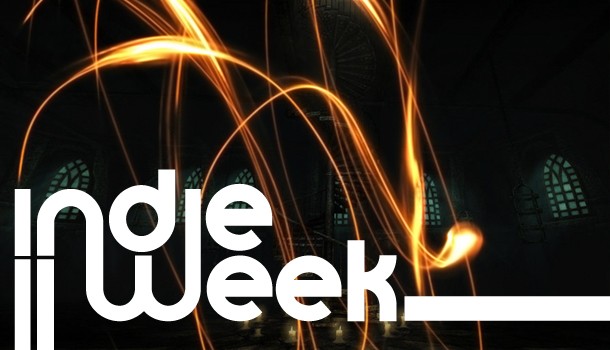
[Welcome to Indie Week at gameinformer.com. We’ve got a full seven days of indie game coverage leading up to the 2011 Independent Games Festival Awards. Check back daily for coverage of the top independent games of the year.]
What exactly is technical excellence? Read on to find out and see a new batch of innovative indie titles.
This category isn't necessarily as easy to define as design or audio, for example. From our understanding, it's how a game incorporates its technology into meaningful gameplay.
Judges in this category include Renaud Bédard (Fez), Raigan Burns (N+), Ron Carmel (World of Goo), Chris Delay (Darwinia), Ryan Doyle (Joe Danger), Alec Holowka (Aquaria), David Kalina (Spider: The Secret of Bryce Manor), Anna Kipnis (Double Fine), Andy Nealen (Osmos), Tommy Refenes (Super Meat Boy), Ivan Safrin (independent game designer), Dan Tabar (Cortex Command).
A WORD FROM THE IGF JUDGES: "The jurists in the Technical Excellence category long debated precisely what aspects of a game's underlying science should be praised and rewarded, before settling on a definition revolving around implementation of that technology.
"'Games that are 'technically excellent' are also usually a testament to craftsmanship and taste,' remarked one jurist. 'In other words, having a super-duper particle system is one thing, but using that particle system in a way that supports the gameplay is a more impressive use of tech.' "To that end, Frictional's Amnesia was again selected by a jury not just for its impressive underlying engine, but, for example 'using its lighting system to create the atmosphere that makes it the great game that it is' - for 'using shader effects and nonlinear projective mappings...to convey claustrophobia and anxiety.'
"SpikySnail's Confetti Carnival, too, was praised for its polish and intuitiveness, and for 'perfect tweaking a well-studied piece of technology.' Said one jurist: 'Crafting a mass-spring system such that it behaves like a continuum is a hard problem, and the continuum 'hack' these guys implemented works great.'
"Meanwhile, jurists also praised Marc ten Bosch's fourth-dimension exploring puzzler Miegakure for using game mechanics to 'provide a space for the exploration of a technically complex and fascinating concept,' and generally serving 'as a demonstration of why games are unique among other technical mediums, able to illuminate ideas through interaction in a way that nothing else can.'
"And finally, two games that explore similar themes of shared creative space. Mojang's Minecraft was selected for the way it 'demonstrates how the interaction of simple systems can create beautifully complex and emergent consequences,' and for 'the uncertainty of the procedural terrain algorithm, coupled with the genius decision to limit the player to the same grid that the terrain generator operates on,' while Robot Loves Kitty's Neverdaunt: 8Bit was highlighted for 'the sheer depth of what you can create' and for details like its 'explicit logical gates' and 'dynamic surfaces.'"
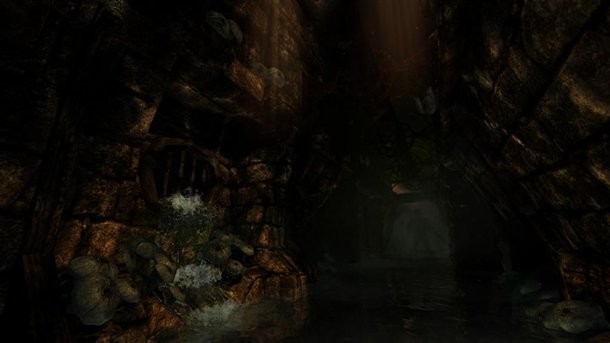
AMNESIA: THE DARK DESCENT
Other Nominations: Excellence in Audio, Seumas McNally Grand Prize
Developer: Frictional Games
Platform: Windows, Mac, Linux
Release Date: Available Now
Price: $19.99
Note: This article originally appeared in the March 2011 issue of Game Informer (#215), authored by Meagan Marie
A first-person survival horror title with an emphasis on atmosphere, Amnesia: The Dark Descent is the brainchild of Penumbra creators Frictional Games. Amnesia places you in the shoes of Daniel, a protagonist aloof from his current circumstances due to a case of self-inflicted memory loss. Wandering aimlessly through a dilapidated Prussian castle, letters penned in his own hand indicate that some things are perhaps best left forgotten. Daniel’s more cognate self assures him through written instructions that finding a man deep within the castle named Alexander, and subsequently murdering him, will set everything right.
Odd happenings occur at around corner and vastly effect the way the game is played. If Daniel spends too long in the dark he will begin to madden – is sanity slipping in tandem with the source of light. Matches and lantern fuel are commodities to be fiercely protected. Unnerving events – objects moving unaided or disembodied voices echoing through the dank halls – will also cause Daniel’s sanity to slip. When his mental faculty dips into dangerous territory, the floor will begin to waver, walls pulse, and his head spin. The effect is disorienting and makes even more difficult to discern between what is real, and what is a result of Daniel’s fevered frenzy. Lurking enemies make exploration unnerving, as one never knows what sort of horror waits patiently around the bend.
Extremely polished for an indie title, Frictional powers its games with proprietary technology created by a studio of around five fulltime staffers. Amnesia: The Dark Descent has received positive reviews across the board, with many counting it among the most terrifying games they’ve ever encountered. See for yourself below.
Want more of Game Informer’s thoughts on Amnesia? Check out our review here.
[Next up: Confetti Carnival]
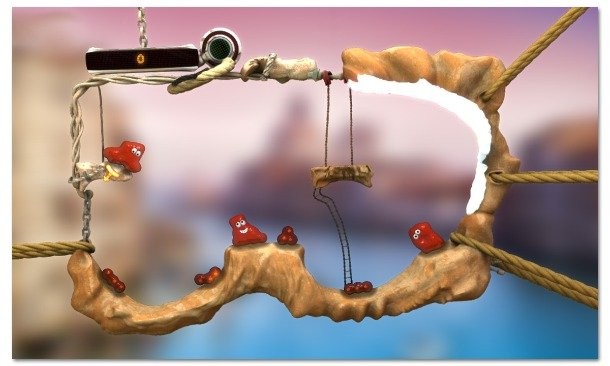
CONFETTI CARNIVAL
Developer: SpikySnail Games
Platform: PC
Release Date: TBA
Price: TBA
Israeli developer SpikySnail Games is coming out strong with its debut title earning a nomination from the IGF. Confetti Carnival puts players in control of gummy creatures and who must clear entire puzzle boards of exploding confetti clusters.
You control one gummy at a time, aiming a pointer to your desired destination. A left mouse click will initiate a simple jump to get you in position while a right mouse click performs a slam that turns the creatures into liquid. This liquid form is the only way to clear out the bombs and finish the puzzle.
Eventually, the game introduces more colors of gummies that can only destroy the matching color bombs. This mixed with changing geometry ups the challenge gradually. Players can also hit the space bar to briefly rewind time and give a better coating of liquid on the troublesome bombs. I also made it to a new "talent" in which you can jump and change direction in mid-air for an air strike.
If you clear enough bombs in quick succession, you'll rack up a combo multiplier for extra points. These points in turn give you a higher star rating at the end of the stage and help to unlock more levels.
Other modes I wasn't able to try include Combo Carnival, Puzzle Challenge, and Versus Mode. The latter option especially is quite intriguing.
[Next up: Miegakure]
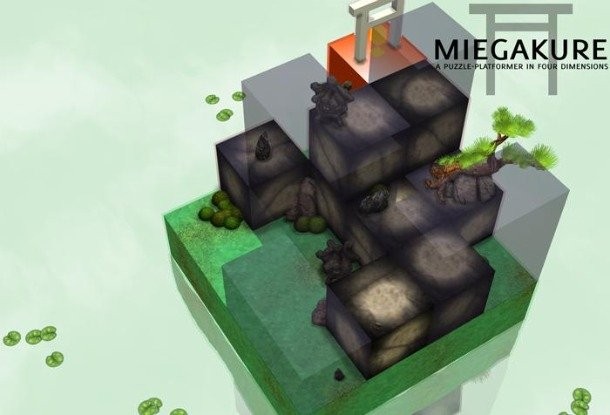
MIEGAKURE
Developer: Marc Ten Bosch
Platform: PC/TBA
Release Date: TBA
Price: TBA
The name and look may lead people to think that Miegakure comes out of Japan, but developer Marc Ten Bosch actually hails from Berkeley, California. The game is an isometric platformer in which your character explores a hub world to unlock new levels. Within these levels, he must make it to a gate to win.
What makes it stand out is its use of a mystical 4th dimension. An earlier rough version of the game in the video below shows this concept better than I could explain it, but you can basically travel through multiple dimensions to get past tricky obstacles. Sometimes a wall will block your path or a gate will be too high to jump to. Here you can dimension hop to find hidden platforms or push wooden blocks out of the way.
The ambiance is a big part of the experience as well. Traditional Japanese music conveys a calmness to the proceedings and NPCs are around to get into trouble and express shock at your abilities.
Out of the unreleased games on this list, I found Miegakure to be my personal favorite, and hope that it's completed soon.
[Next up: Minecraft]
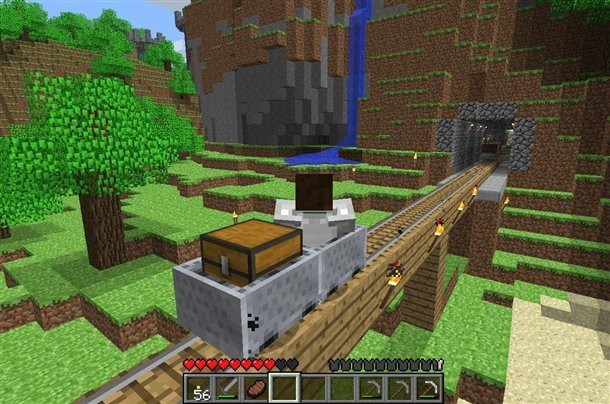
MINECRAFT
Other Nominations: Excellence in Design, Seumas McNally Grand Prize
Developer: Mojang Specifications
Platform: Browser, Windows, Mac, Linux
Release: Beta Available Now
Price: $19.99
Note: This article originally appeared in the March 2011 issue of Game Informer (#215), authored by Meagan Marie
If there’s been a single Cinderella story of 2010, the distinction goes to Mojang Specifications’ Minecraft. Creator Markus “Notch” Persson first conceptualized the game in May of 2009 and it quickly garnered attention from the press and a rabid following of fans, nabbing hundreds of thousands in sales while still in alpha.
Built upon a foundation of tedium, the highly addictive and rewarding sandbox title is more a tool for one’s imagination than an explicit game. The beta tasks players with constructing environments and objects out of textures cubes harvested in a simplistic 3D world. As the name implies, mining is paramount to crafting further and further complex items. Commonplace resources such as wood and cobblestone can be processed and combined to yield swords, pickaxes, workbenches, furnaces, and more. With enough resources scavenged, both common and extremely rare, you will eventually find yourself harvesting crops, cooking food, constructing armor, and traveling the countryside by minecart.
The beta, which launched in December of 2010, introduced more traditional game elements such as multiplayer, a health bar, and hostile creatures. While the core functionality remained the same, fortification and protection became considerations in addition to one’s creative intentions. Perhaps the most impressive aspect of Minecraft, however, is the ingenuity and intelligence of its fans. Some of the most dedicated players have gone so far as to recreate BioShock’s Rapture, Portal’s Aperture Science facilities, and even a scale model of the U.S.S. Enterprise.
Having met such massive success through Minecraft, Persson founded Mojang Specifications in Stockholm, and now employs a handful of staffers who support both Minecraft and the development of a yet-to-be-announced second game. Persson promises that he will continue to develop Minecraft until it is a finished and complete experience, and that post-launch support will be maintained as long as people enjoy and purchase the game. As of January 12, Minecraft has passed one million sales. We doubt the momentum will slow anytime soon.
Check out one of Notch's own Minecraft creations below.
[Next up: Neverdaunt: 8Bit ]
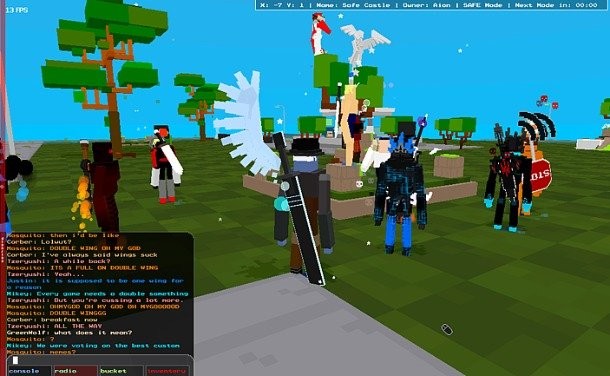
NEVERDAUNT: 8Bit
Developer: Robot Loves Kitty
Platform: PC
Release Date: Currently In Beta
Price: TBA
This self described sandbox MMO comes from New York based developer Robot Loves Kitty. It's a little tough to comprehend right out of the gate. You start as a polygonal character who can wander around in a blocky lo-res world.
During my playthrough I couldn't find any other players to interact with, but as you can see in the screen above, the world can get quite populated with fully customizable characters. You can build up massive structures and go on quests to take down zombie Santas, a massive snowman, and a pack of Thermites.
The best part about "N8" is that anyone can go and join the beta to play around with for free right now. So go check it out and see what you think.
Technical Excellence Honorable Mentions: Cobalt (Oxeye Game Studio), Achron (Hazardous Software), Hazard: The Journey Of Life (Demruth), Overgrowth (Wolfire Games), Swimming Under Clouds (Piece Of Pie Studios)

Get the Game Informer Print Edition!
Explore your favorite games in premium print format, delivered to your door.
- 10 issues per year
- Only $4.80 per issue
- Full digital magazine archive access
- Since 1991









